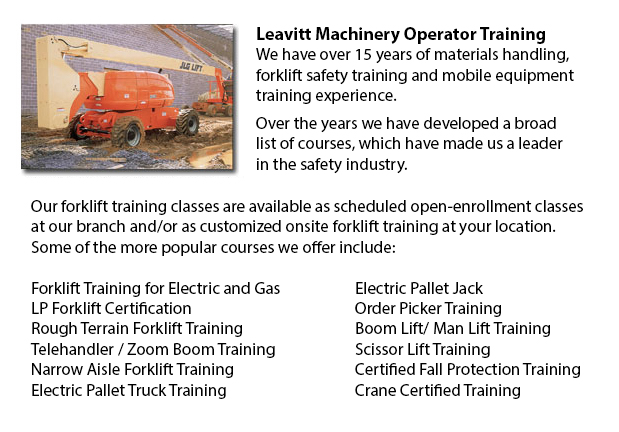
Boom Lift Certification Scottsdale - Utilizing elevated work platforms allow for work and maintenance operations to be done at elevated work heights which were otherwise unreachable. Boom Lift Certification Training educates workers about the safe operation of scissor lifts and boom lifts.
Despite the range in lift style, applications and site conditions, all lifts have the potential for serious injury or death when not safely operated. Falls, electrocution, tip-overs and crushed body parts could be the unfortunate result of incorrect operating procedures.
To be able to avoid aerial lift incidents, individuals need to be qualified to train workers in operating the specific kind of aerial lift they would be utilizing. Controls must be easily accessible in or beside the platform of boom lifts utilized for carrying workers. Aerial lifts should not be be altered without the express permission of the manufacturer or other recognized entity. If you are renting a lift, make certain that it is maintained properly. Before using, safety devices and controls should be inspected in order to make certain they are functioning properly.
Operational safety procedures are important in preventing accidents. Operators should not drive an aerial lift with the lift extended (even if some are designed to be driven with an extended lift). Set outriggers, if available. Always set brakes. Avoid slopes, but when required utilize wheel chocks on slopes which do not exceed the slope restrictions of the manufacturer. Follow load and weight limitations of the manufacturer. When standing on the boom lift's platform, utilize a safety belt with a two-foot lanyard tied to the boom or basket or a full-body harness. Fall protection is not required for scissor lifts which have guardrails. Do not climb or sit on guardrails.
This course comprises the following topics: safety guidelines to be able to prevent a tip-over; training and certification; inspecting the work area and travel path; surface conditions and slopes; other guidelines for maintaining stability; stability factors; weight capacity; leverage; pre-operational inspection; testing control functions; mounting a vehicle; safe operating practices; overhead obstacles and power lines; safe driving procedures; PPE and fall protection; using lanyards and harness; and avoid falling from the platform.
The trainee who is successful will know the following: training and authorization procedures; pre-operational inspection procedures; factors affecting the stability of scissor and boom lifts; how to avoid tip-overs; how to utilize PPE, how to utilize the testing control functions and fall prevention strategies.
-
Crane Certification Scottsdale
Crane Certification Scottsdale - The Crane Certification Program consists of the industry suggested subject matter that would teach the efficient and safe operation of cranes. The person would train in the following: pre-operational, operational and... More -
Heavy Equipment Operator Training Scottsdale
Heavy Equipment Operator Training Scottsdale - Heavy equipment operator training facilities that provide good standards within the business, offering field performance tasks and additional equipment training are really sought after training features.... More -
Heavy Equipment Training School Scottsdale
Heavy Equipment Training School Scottsdale - HEO or the heavy equipment operator courses would provide you with the skills and knowledge required so as to enter the workforce as an entry level heavy equipment operator. In this twelve week course plus... More -
Crane Operator Classes Scottsdale
Crane Operator Classes Scottsdale - For the operators and the supervisors, current and new, the crane operator training course is suitable for all. Course content deals with applicable federal, provincial and state safety regulations. The training's... More -
Forklift Operator Certification Scottsdale
Forklift Operator Certification Scottsdale - Certification for forklifts are required to guarantee the safe operation of forklifts for those employers in warehouse, construction and industrial environments. The training needs to involve a method of e... More -
Crane Training Schools Scottsdale
Crane Training Schools Scottsdale - Our different programs for Mobile Crane Operation are meant for skilled operators who needs certification or re-certification, and for inexperienced people who are searching for their very first job as an operator... More -
Aerial Boom Lift Training Scottsdale
Aerial Boom Lift Training Scottsdale - Aerial Boom Lift Training is necessary for any individual who supervises, operates or works near boom lifts. This particular type of aerial lift or aerial work platform is utilized for lifting individuals, mater... More -
Telehandler Training Scottsdale
Telehandler Training Scottsdale - Telescopic handlers often known as telehandlers for short, are an extremely popular piece of heavy construction equipment. They are widely used in the construction and agricultural industries. These equipments have f... More

Forklift Training Scottsdale
TOLL FREE: 1-888-254-6157
Scottsdale, Arizona
forkliftcertificationscottsdale.com
Email Us
About Us


